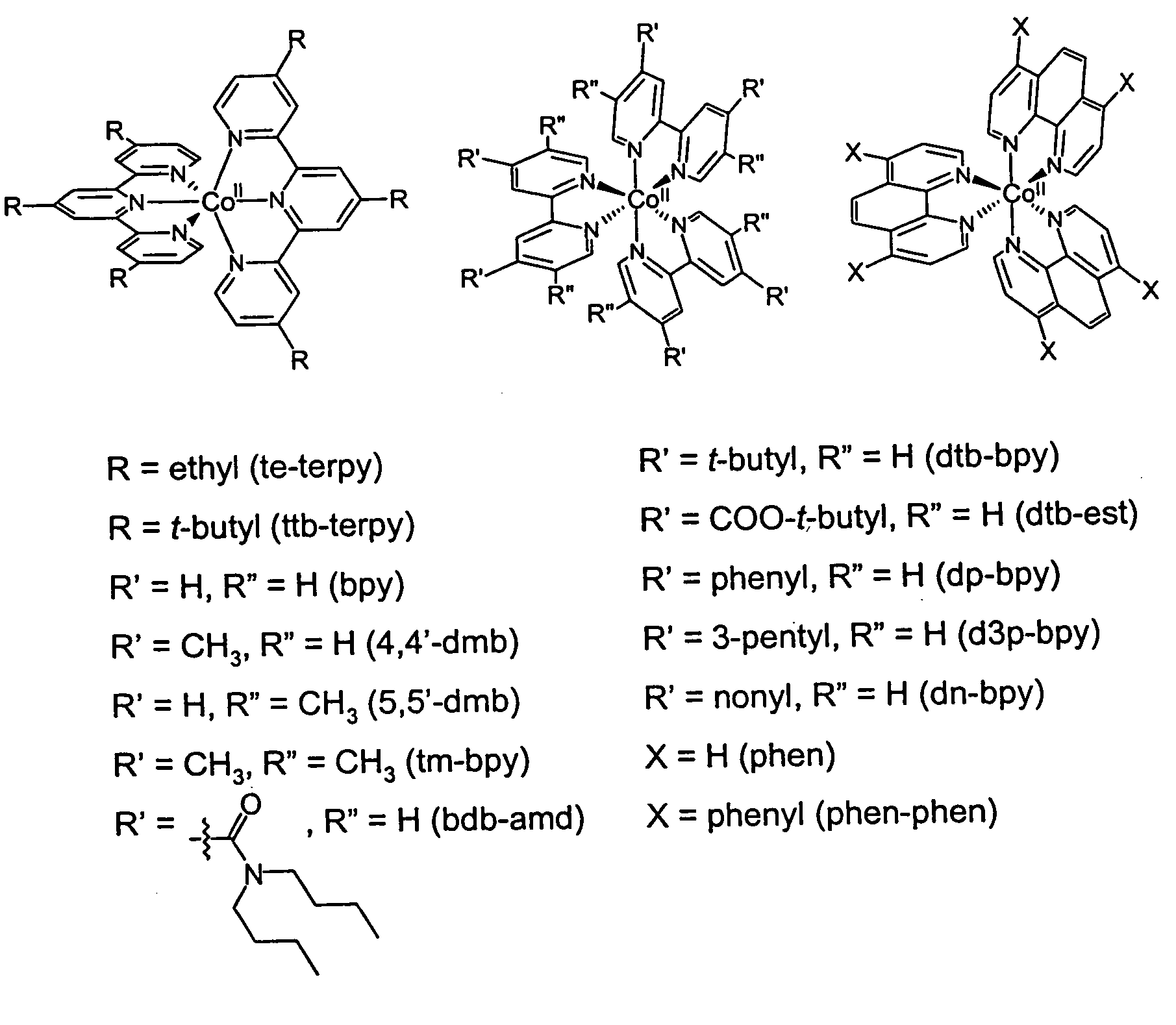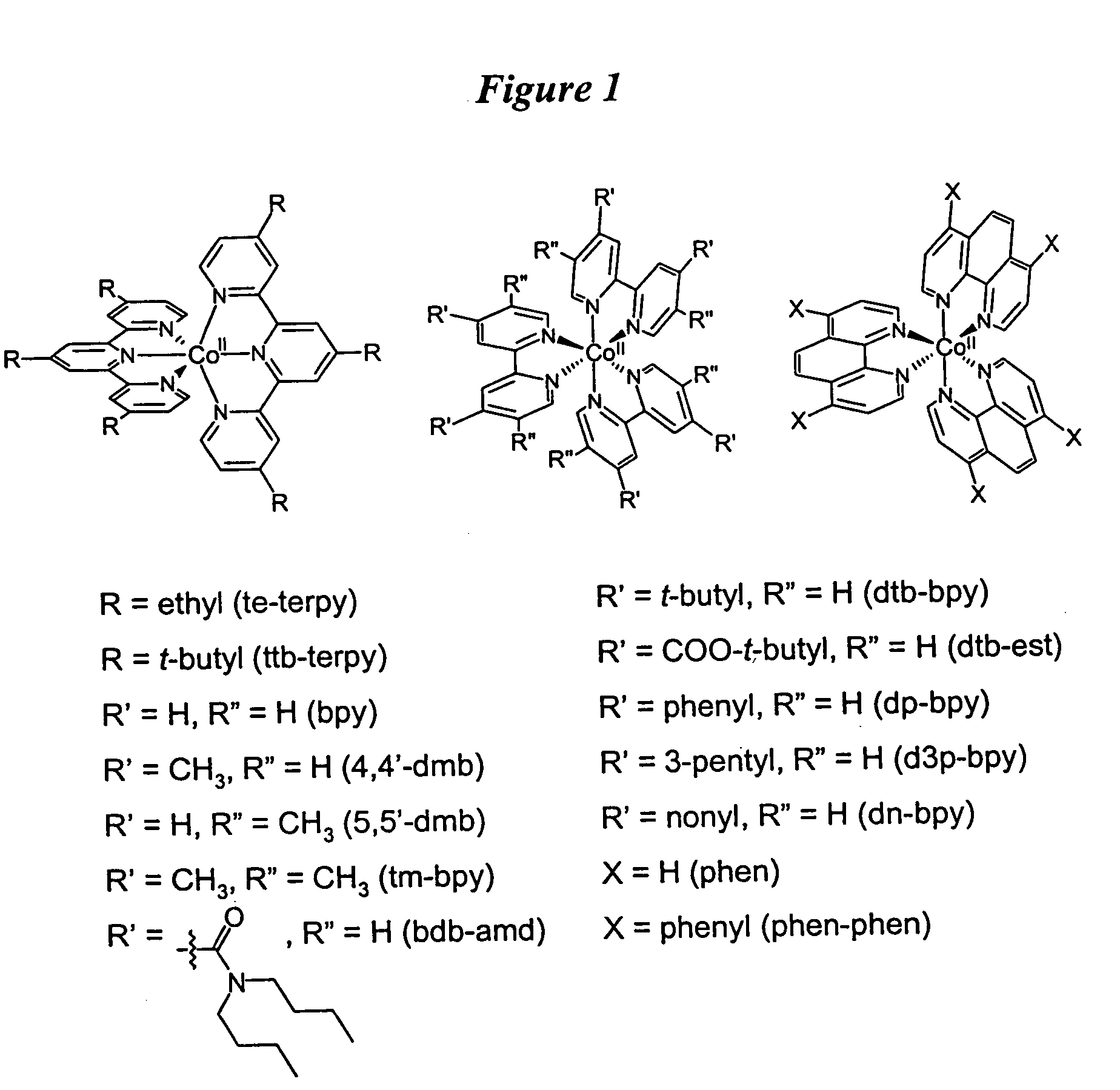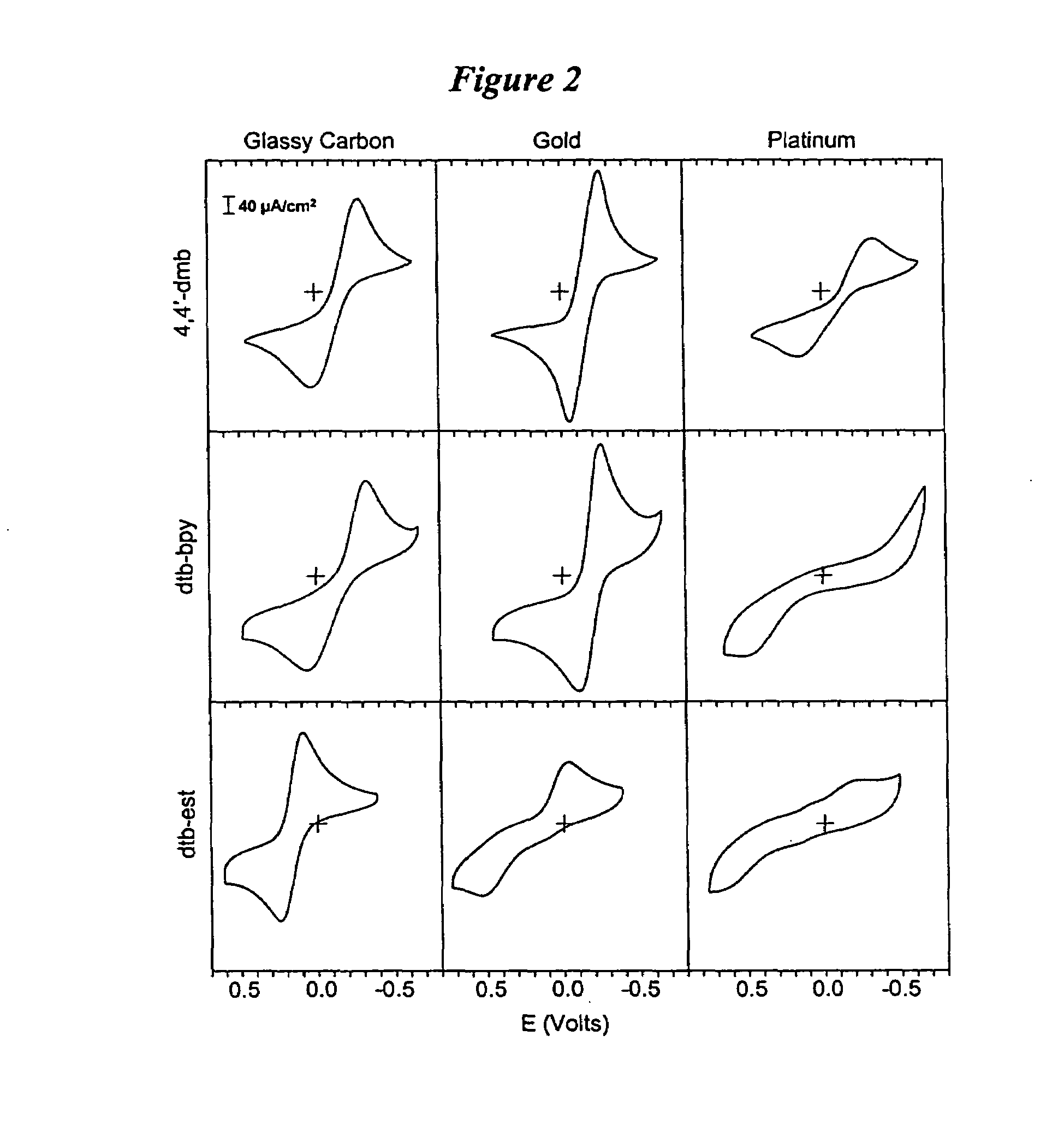Metal complex-based electron-transfer mediators in dye-sensitized solar cells
a solar cell and electron-transfer mediator technology, applied in the field of metal complexes, can solve the problems of high corrosive /sub>mediator mixtures, limited number of known electron-transfer mediators, and complex cell construction
- Summary
- Abstract
- Description
- Claims
- Application Information
AI Technical Summary
Problems solved by technology
Method used
Image
Examples
example 1
[0067]This example illustrates a method for synthesizing 4,4′-di-(3-pentyl)-2,2′-dipyridyl.
[0068]Freshly distilled 4-(3-pentyl)pyridine (18 mL) was refluxed with 2 g of 10% Pd on activated carbon under nitrogen for 5 days. After cooling the mixture to room temperature, the solids were filtered and rinsed with dichloromethane (CH2Cl2). The solvent in filtrate was then removed by rotary evaporation. Most of the unreacted 4-(3-pentyl)pyridine was removed by vacuum distillation. The remaining viscous oil was subjected to flash column chromatography using silica gel. The eluent was a gradient of acetone in CH2Cl2 that was saturated with concentrated ammonium hydroxide solution. Combining and reducing the volume of the product containing fractions resulted in 2.7 g (16% yield) of 4,4′-di-(3-pentyl)-2,2′-dipyridyl in the form of a nearly colorless viscous oil that solidified into a waxy crystalline solid on standing at room temperature.
[0069]1H NMR (300 MHz, CDCl3) δ ppm: 0.81 (12H, t, 4×C...
example 2
[0070]This example illustrates a method for synthesizing 2,2′-bipyridine-4,4′-dicarboxylic acid chloride.
[0071]Approximately 10 g of 2,2′-bipyridine-4,4′-dicarboxylic acid was placed in a 500 ml round-bottom flask fitted with a condenser. Thionyl chloride (ca. 200 ml) was added and the flask flushed with N2. The solution was refluxed under a static N2 atmosphere with stirring for three to four days. The solution was allowed to cool and the solids settle. Approximately 50 ml of the clear yellowish solution was decanted into a clean 250 ml flask being careful not to transfer any of the un-reacted solid. The thionyl chloride was removed by rotary evaporation leaving a slightly yellow-green solid on the sides of the flask. This product was used immediately without characterization or further purification.
example 3
[0072]This example illustrates a method for synthesizing 2,2′-bipyridine-4,4′-di-t-butoxyester.
[0073]From a freshly opened bottle that had previously been warmed to melt the contents, ca. 20 ml of t-butyl alcohol was transferred to a clean dry Erlenmeyer flask. A piece of sodium (ca. 1 g) was washed several times with t-butyl alcohol and added to the Erlenmeyer flask. The flask was warmed with stirring under N2 until the sodium had totally dissolved (ca. 1.5 hrs). This solution of sodium t-butoxide was then added to the flask containing the 2,2′-bipyridine-4,4′-dicarboxylic acid chloride. The flask immediately became hot to the touch. The resulting slurry was stirred for 30 min. and allowed to cool to room temperature. The solution was then filtered and the solid was washed with several portions of CH2Cl2.
[0074]The solution fractions were combined and the solvent removed by rotary evaporation leaving a yellowish solid on the sides of the flask. This solid consisted of the desired pr...
PUM
 Login to View More
Login to View More Abstract
Description
Claims
Application Information
 Login to View More
Login to View More - R&D
- Intellectual Property
- Life Sciences
- Materials
- Tech Scout
- Unparalleled Data Quality
- Higher Quality Content
- 60% Fewer Hallucinations
Browse by: Latest US Patents, China's latest patents, Technical Efficacy Thesaurus, Application Domain, Technology Topic, Popular Technical Reports.
© 2025 PatSnap. All rights reserved.Legal|Privacy policy|Modern Slavery Act Transparency Statement|Sitemap|About US| Contact US: help@patsnap.com



